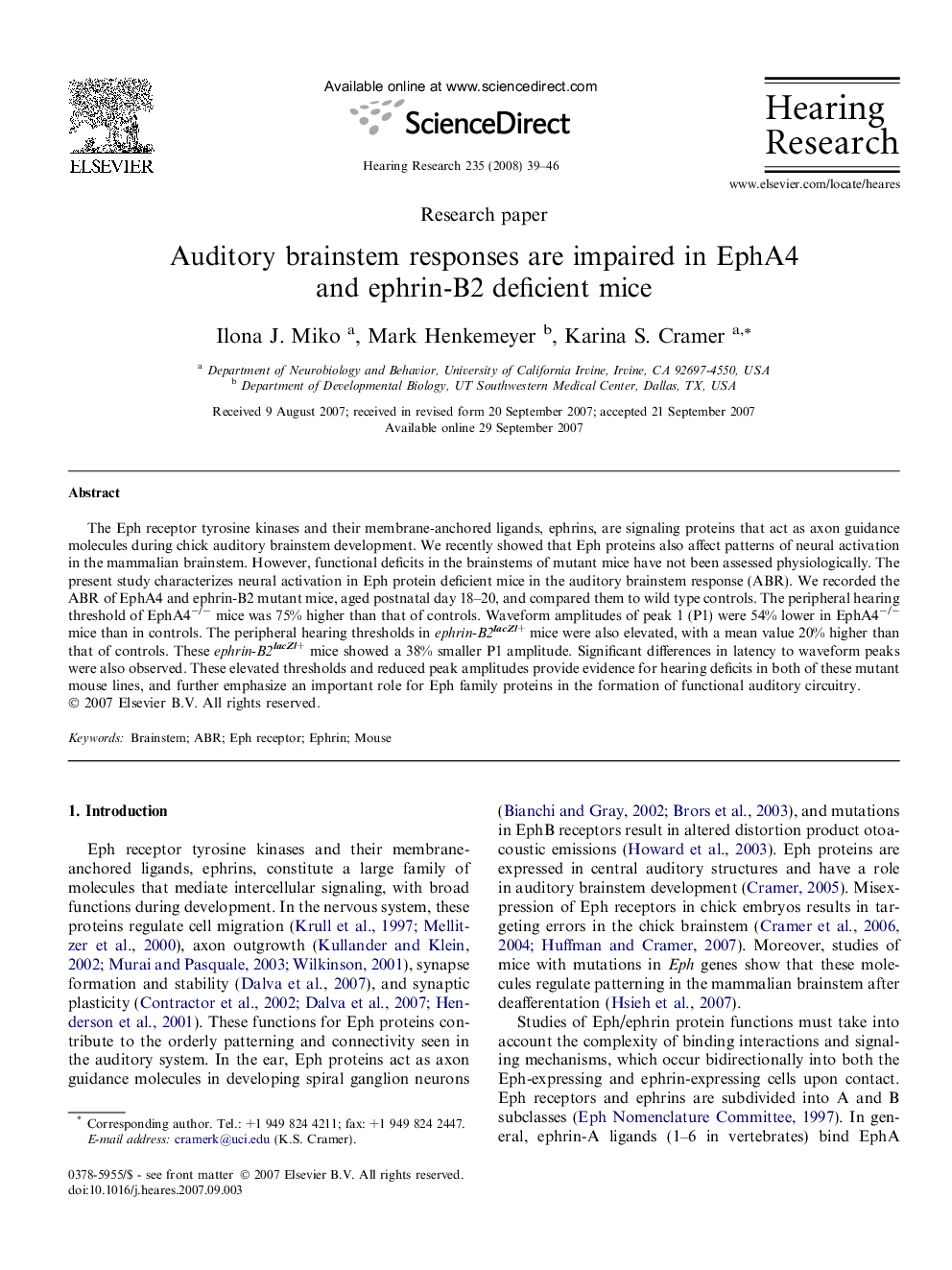| Article ID | Journal | Published Year | Pages | File Type |
|---|---|---|---|---|
| 4356140 | Hearing Research | 2008 | 8 Pages |
The Eph receptor tyrosine kinases and their membrane-anchored ligands, ephrins, are signaling proteins that act as axon guidance molecules during chick auditory brainstem development. We recently showed that Eph proteins also affect patterns of neural activation in the mammalian brainstem. However, functional deficits in the brainstems of mutant mice have not been assessed physiologically. The present study characterizes neural activation in Eph protein deficient mice in the auditory brainstem response (ABR). We recorded the ABR of EphA4 and ephrin-B2 mutant mice, aged postnatal day 18–20, and compared them to wild type controls. The peripheral hearing threshold of EphA4−/− mice was 75% higher than that of controls. Waveform amplitudes of peak 1 (P1) were 54% lower in EphA4−/− mice than in controls. The peripheral hearing thresholds in ephrin-B2lacZ/+ mice were also elevated, with a mean value 20% higher than that of controls. These ephrin-B2lacZ/+ mice showed a 38% smaller P1 amplitude. Significant differences in latency to waveform peaks were also observed. These elevated thresholds and reduced peak amplitudes provide evidence for hearing deficits in both of these mutant mouse lines, and further emphasize an important role for Eph family proteins in the formation of functional auditory circuitry.
